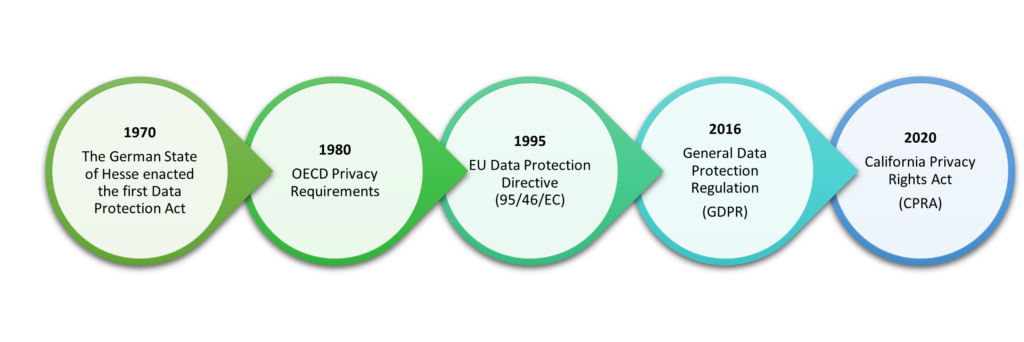The Evolution of Data Privacy in the Digital Age
Tracking Technologies and Shadow Profiles
As technology advanced rapidly in the late 20th century, so too did the capabilities of online tracking. Websites soon realized they could collect usage data across numerous domains to build detailed profiles of individuals, even those who had never directly provided any personal information. Known as “shadow profiles,” these rendered dossiers pieced together clues from a person’s browsing habits and interests to infer wide-ranging details about them. While shadow profiles brought convenience through personalized recommendations, their accuracy also raised privacy concerns should sensitive data fall into the wrong hands.

Profiling Reveals More than Intended
In the early 2010s, media reports surfaced of an unsettling use of profiling technology. Austrian prostitutes discovered that social media sites they joined under pseudonyms had matched their profiles to clients, outing their work to acquaintances without consent. This event highlighted how readily trackers could infer private facts beyond basic demographics. Whether deducing political views, sexual orientation, or illicit occupations, the potential for profiles to reveal sensitive hidden attributes challenged the premise of online anonymity. As profiling grew increasingly sophisticated through vast troves of “Big Data,” individuals began losing control over who knew what about them based on their digital footprints.
Law Enforcement Access to Personal Data
At the same time, governments sought legal means to tap into commercial data stores for intelligence and criminal investigations. In the United States, the 2018 Clarifying Lawful Overseas Use of Data (CLOUD) Act enabled federal agencies to compel technology companies to hand over personal records of citizens abroad via executive orders. However, individuals from other jurisdictions had limited avenues for redress if unfairly targeted based on inferred traits in their shadow profiles. With authorities able to covertly screen vast databases for potential suspects, the capability for profiles to expose law-abiding people to unwarranted scrutiny intensified privacy tensions between nations.
The EU Asserts Strong Data Protection
As digital dossiers grew in breadth and depth globally, the European Union spearheaded robust regulations safeguarding citizens’ information rights. A landmark 2015 decision by the European Court of Justice struck down the US-EU Safe Harbor Framework, finding American surveillance programs disproportionately infringed on Europeans’ privacy. This landmark “Schrems I” ruling paved the way for the continent’s comprehensive General Data Protection Regulation (GDPR) enacted in 2018. Strict consent requirements and “right to be forgotten” provisions rebalanced individual and corporate interests in personal data. Most notably, the GDPR prohibited transferring Europeans’ information to nations like the US without “essentially equivalent” privacy laws and judicial redress.
Schrems II Solidifies International Data Flow Restrictions
Privacy advocates continued challenging the adequacy of US protections through the courts. In 2020, activist Max Schrems’ legal struggle reached the European Court of Justice again. The “Schrems II” decision invalidated the Privacy Shield framework replacing Safe Harbor, determining American surveillance still failed to respect fundamental rights. Most significantly, the ruling established that all transferring companies must assess host countries’ laws critically and supplement standard contractual clauses with “additional safeguards” if needed to guarantee an equivalent standard of protection for Europeans. In the wake of Schrems II, international data transfers became legally tenuous without clearly bridging disparities between bloc and partner nation regulations.
Businesses Respond to the New Transatlantic Reality
The Schrems II verdict posed major logistical hurdles for transatlantic commerce reliant on fluid information flows. US government officials lamented the ruling’s economic consequences while advocating reform proved politically unfeasible. European leaders pledged cooperation to develop modernized transfer mechanisms respecting privacy yet facilitating trade. In the interim, global corporations scrambled to ensure continued compliance. Many suspended data transfers outright or invested in localized European infrastructures, while commerce groups appealed for interim solutions. Technical professionals explored encrypted messaging, differential privacy, and other techniques aiming to fulfill courts’ stringent “additional safeguards” requirement for safe cross-border data utilization.
Toward a Harmonized Global Approach
As divergent privacy frameworks fractured the digital sphere, efforts increased bridging differences to maintain interoperability. Regulators on both sides of the Atlantic continued discussing potential long-term adequacy agreements meeting the high standards demanded by GDPR and Schrems jurisprudence. International standard-setting bodies drafted privacy certification schemes applicable worldwide. Technical collaboration pursued research advancing anonymous analytics and federated learning allowing distributed, privacy-preserving inference over dispersed datasets. However, reconciling civil liberties with national security remained complex. Meaningful change would require political will declassifying surveillance programs and upholding due process globally. Only through openness, oversight and respectingindividuals’ autonomy over personal information on par with Europe could a unified harmonized approach be achieved.
Staying Vigilant in the Interim
For the time being, organizations must stay nimble complying with fast-changing privacy laws and watchful of legal challenges questioning new transfer frameworks. Individuals too need awareness that ubiquitous digital footprints leave them vulnerable if left unguarded. With profiles capable of unveiling sensitive secrets, and authorities poised to screen immense repositories of personal data, vigilance remains vital both online and off. No person can claim true privacy without circumspect behavior and prudent use of protective measures, regardless of location. Until regulations stabilize on an even worldwide playing field, all parties have roles guarding information rights and ensuring fairness in both commercial applications and administrative access governing day to day modern life.
A More Balanced Future
Over the past few decades, advances eroding privacy often outpaced safeguards protecting individuals. However, as awareness grew of tracking’s overreach through incidents like Austrian online outing of prostitutes, consumers and authorities took action recalibrating the relationship between technology wielders and data subjects. By advocating for regulations ensuring autonomy over personal details and oversight ofsensitive data use, groups like those of Max Schrems paved the way for legal frameworks instilling equilibrium in the digital realm. Ongoing standards development also promises to curb privacy infractions while facilitating international cooperation. With open cooperation and technical innovation applying strong protections universally, the next generation may see personal information exchanges governed by proportionate, consistent and comprehensive worldwide principles respecting human dignity in both the physical and virtual spheres.
The Evolution of Data Privacy in the Digital Age
